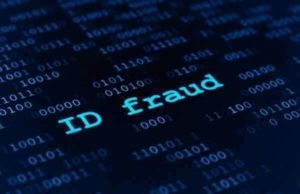4 Questions Answered About Internet Fraud

4 Questions Answered About Internet Fraud
Internet fraud has become a pervasive concern in today’s digital landscape, with cybercriminals using various techniques to deceive and defraud individuals and organizations. This article answers four critical questions about internet fraud, shedding light on its nature, impact, prevention, and reporting.
1. What is Internet Fraud?
Unveiling the Essence of Online Deception
Internet fraud, also known as online fraud or cyber fraud, refers to any fraudulent activity that takes place in the digital realm. It involves the use of the internet to deceive, manipulate, or steal from individuals, organizations, or businesses. Internet fraud encompasses a wide range of illicit activities, including identity theft, phishing, Ponzi schemes, fake online sales, and more.
2. How Does Internet Fraud Impact Individuals and Organizations?
The Far-reaching Consequences
Internet fraud has significant consequences for both individuals and organizations:
a. Financial Loss: Victims of internet fraud often suffer financial losses, including theft of funds, unauthorized charges, and damage to their credit.
b. Privacy Invasion: Fraudsters may gain access to personal information, leading to privacy breaches and potential identity theft.
c. Reputation Damage: For organizations, falling victim to internet fraud can harm their reputation and erode the trust of customers and partners.
d. Legal Repercussions: Perpetrators of internet fraud may face legal consequences, including fines, imprisonment, and asset forfeiture.
e. Emotional Distress: Victims often experience emotional distress, anxiety, and a loss of trust in others.
3. How Can You Prevent Internet Fraud?
Taking Proactive Measures
Preventing internet fraud involves a combination of vigilance and security measures:
a. Educate Yourself: Stay informed about common online fraud tactics like phishing, malware attacks, and identity theft.
b. Use Strong Passwords: Create strong, unique passwords for online accounts and enable multi-factor authentication whenever possible.
c. Install Security Software: Use reputable antivirus and anti-malware software to protect against online threats.
d. Verify Requests: Always confirm the legitimacy of requests for personal information or financial transactions before taking action.
e. Report Suspicious Activity: If you suspect internet fraud, report it to the relevant authorities, your organization’s IT department, or your bank.
4. How Can You Report Internet Fraud?
Taking Action Against Fraudsters
Reporting internet fraud is a crucial step in combating online deception:
a. Local Authorities: If you believe you have fallen victim to internet fraud, contact your local law enforcement agency to file a report.
b. Federal Agencies: In the United States, you can report internet fraud to the Federal Trade Commission (FTC) through their online complaint assistant.
c. Financial Institutions: If you encounter fraudulent activity on your bank or credit card accounts, contact your financial institution to report the issue.
d. Online Platforms: Many online platforms, such as social media sites and marketplaces, have mechanisms for reporting fraudulent activity.
e. Internet Crime Complaint Center (IC3): IC3, a partnership between the FBI and the National White Collar Crime Center, allows victims to report internet crimes and provides information on current scams.
Conclusion
Internet fraud remains a pervasive and evolving threat in the digital world, with cybercriminals using various tactics to deceive and defraud individuals and organizations. By understanding the nature and impact of internet fraud, taking proactive prevention measures, and reporting suspicious activity, individuals and organizations can better protect themselves against the growing threat of online deception. Vigilance, education, and responsible practices are essential in maintaining digital safety and security.
What is Internet Fraud?
Internet Fraud is rooted within the setting of electronic technology as a result of the vast opportunities presented through the advents of electronic communication. Technology can be utilized for a variety of means – both in its development, as well as well as its respective jurisdiction – however, within any new advancement and discovery, the risk of corollary criminal activity may also be present.
The presence of Internet Fraud takes place upon criminal activity being undertaken in order to bypass any or all legal, lawful, and ethical protocol with regard to electronic, computational, and internet-based networks.
How Does Internet Fraud Affect Personal Privacy?
The breach of legal parameters and protocols that exist in tandem with personal privacy, space, and domain entitled to every citizen of the United States may take place in the event of a forged electronic signature, the unlawful access of personal records, and the illicit attainment of data belonging to the victim of electronic identity theft. Cyber Law – or Internet Legality – is considered to be one of the newest legal fields due to its evolution in conjunction with the advancement of technological industry.
Due to the fact that this type of internet-based technology heavily relies on online activity and virtual networks, regulations and oversight of this type of activity has been expressed within the realm of legality. The activity latent within computer fraud and electronic identity theft may span a variety of avenues and jurisdictions, including the ethical and moral use of the internet for lawful and legal purposes. Identity theft can result in the exploitation and manipulation of victims involved through intrusive means of illicit online activity. How Does Internet Fraud Happen?
Each individual computer terminal that shares connection to the Internet – ranging from an individual network to a local area network (LAN) – is provided an Internet Protocol Number as a means of identification. Internet Protocol numbers allow for the interconnection – through the transmission of communicative measures – of individuals spanning the globe; while the means of online communication have opened the doors to a variety of online-based opportunity, this ease of connectivity has also allowed for a heightened rate of victims of internet fraud. The following are common methods of internet fraud:
Solicitation: Solicitation is classified as the unlawful and illicit request for information or data; means of solicitation are typically undertaken in order to misuse personal and private data belonging to victims of identity theft.
Identity Theft: The criminal act involving the illegal and unlawful acquiring of personal information belonging to another individual with the intent to commit a criminal act through fraudulent misrepresentation; identity theft is commonly facilitated in order to render illegal economic gain.
How to Prevent Electronic Identity Theft
Due to technological innovation, electronic identity theft is considered by many to be one of the most recently-developed crimes, credited – in part – to the ongoing advent of computer-based technology. Companies providing methods of Identity theft prevention have employed protective measures ranging from securing online perimeters to communicative transmission inquiring about the validity of unsubstantiated activity; these types of companies have found their respective niche within the prevention of identity fraud upon providing protection in lieu of infringing on personal privacy.
















